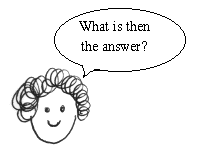| In reality, all the conclusions drawn are uncertain.
They are uncertain because there is uncertainty in the rules used and
uncertainty in the data.
The uncertainty in the data may be expressed with the probability of a certain
input variable to be in a certain state. For example, we may say "Since the
forest is in this area, the rock is probably permeable. The geological map
I have, which has scale 1:200,000, marks all that region as permeable."
Then we may think of our network as a probabilistic network: An attribute
may be in a certain state with certain probability, given the probabilities
with which its causes are in the relevant states, and the conditional
probabilities that relate causes and effects.
Then we shall have to answer questions like:
"If the slope of a field is gentle with probability 20% and the rock permeable
with probability 50% and the soil depth shallow with probability 30%, what
is the probability of erosion to be high?"
This implies that the arrows that lead from causes to effects must be endowed
with the values of the conditional probabilities that express the probability
of a certain state of an effect arising given the necessary conditions of
that state are fulfilled.

P(Erosion=high)=
P(Erosion=high | slope=gentle, rock=permeable, soil depth=shallow) X
P(slope=gentle) X P(rock=permeable) X P(soil depth=shallow)
+P(Erosion=high | slope=gentle, rock=permeable, soil depth=deep) X
P(slope=gentle) X P(rock=permeable) X P(soil depth=deep)
+...
(All the combinations of states of the conditioning variables must be
considered.) |